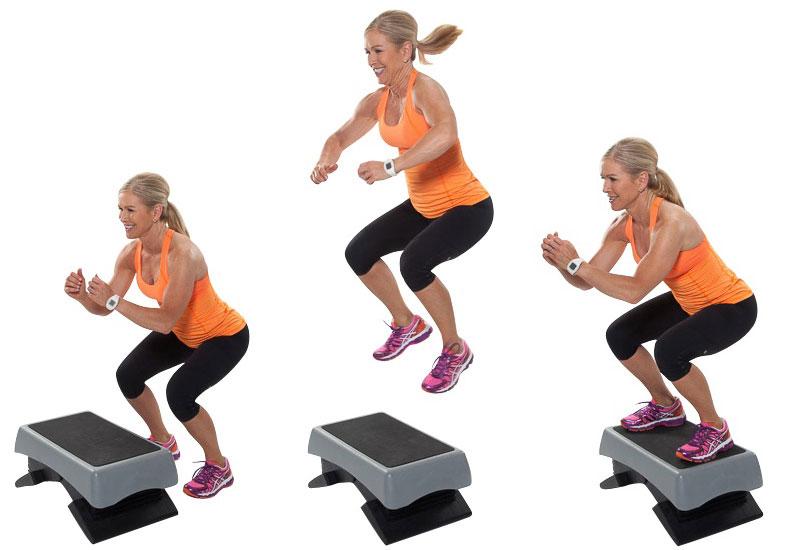The bloodstream continuously transports nutrients and oxygen to the vital organs including skin and brain. If there is any complication with the flow of blood, it can affect your overall health. Blood circulation exercise can make your body fitter and active than ever.
When blood circulation is reduced, conditions like stroke, kidney diseases, and varicose veins may occur. Although there are plenty of super foods that can help boost your blood flow throughout your body, exercise may also prove to be a vital element.
There are exercises specially meant to increase blood circulation. In this post, we have compiled a list of some of the best blood circulation exercises that don’t require you to join a gym or any equipment or even any workout clothes.
These exercises can be performed at any time at the comfort of your home. The thing you have to keep in mind while performing these exercises is the reps – how many repetitions to do to get your heart rate up.
Different Types Of Blood Circulation Exercise You Can Practice
There are different types of blood circulation exercise you can follow or practice to make things happen in your favor and at the right time.
1. Downward Dog:
This is a warm-up exercise, and you should begin with this. It merely is a stretching exercise meant to stretch your legs and lower back. When your arms and legs start feeling the pressure, your heart will pump faster, resulting in proper blood flow.
There are several different ways to get into this pose.
- Start on your hands and knees with your hands in front of your shoulders and your knees directly below your hips
- Slowly spread your fingers wide while actively pushing each finger into the floor
- Next, curl your toes, straighten your legs and arms while pushing your hips in the air
- You have come into an inverted V-shape position
- The objective is to keep your head between your limbs with your legs straight, back flat, and heels touching the ground
- Hold this position for 25-30 seconds.
- Do 3-5 reps
Get your Halo Health new coupon codes and deals here!
2. Jumping Squats:
Jumping squats is a great way to pump up your heart. This complete body workout ensures proper blood flow throughout the body. However, you have to make sure that you have no current back problems as it can worsen the condition.
- Stand in a straight position with your spine aligned and feet shoulder-width apart
- Perform a squat by slowly bending your knees and keeping your upper body straight
- Next, engage your core and jump up explosively. Make sure you jump at least 1 feet high
- When you land, lower your body back to squat position to complete one rep. You need to land as quietly as possible without misbalancing yourself or hurting your ankles. It requires control, and you will learn it over time
- Do at least three sets of 10 reps each
3. Plank:
Now plank might be the best exercise to keep your core strong, but there is no better and challenging way to keep your blood flowing rapidly from the heart to your vital body organs. This exercise may seem simple but is probably the most difficult of all. Doing a perfect plank is easy.
- Lie on the floor with your back facing the ceiling
- Position your elbows under your shoulder while making sure that your hands are shoulder-width apart
- Your arms should form a 90° angle
- Raise your toe tips ensuring that your knees aren’t touching the floor
- Stretch your legs to ensure that your knees aren’t bent
- Maintain a straight line from the heels through the top of your head
- Your face should be looking down at the floor
- Hold this position for as much time as possible
- At least perform three sets
4. Pushups:
Pushups may seem difficult, but if you start slowly, say 1-3 reps at a time, you can reap the many benefits of doing a proper pushup. A pushup is an excellent way to strengthen your arm and chest muscles. And in doing so, it works out your heart correctly, ensuring proper blood flow. To perform proper pushups, follow the given steps
- Lie in a face-down position on the floor
- Position your palms on the floor with your hands at shoulder-width apart
- Your elbows should be pointed towards your toes
- Straighten your knees and lift your body with your toes
- Adjust your posture until you attain a straight plank position with your head facing forward
- Next, slowly bend your elbows while keeping your body at a flat level. Moreover, your chest should come within inches of the ground
- Now, slowly lift yourself up by pushing the floor away from you. As you push up, breathe out
- The power for the push will come from your chest and shoulders working in unison
- Make sure that your back isn’t involved in this activity. If you feel like your back is straining, immediately stop
- Repeat raising and lowering your body at a steady pace. Try to do 10 reps
Perform 3 sets every day to perfect the posture and exercise.
Read Also:
- How To Make Doing Yoga At Home Interesting
- 11 Effective Ways To Improve Testosterone Levels In Your Body
- What Is Garcinia Cambogia And How It Can Help Your Health?
- What Are Virtual Reality Workouts And How Will They Affect Exercise?
- Why Is Random Blood Sugar Test Prescribed? What Is Blood Urea Nitrogen Test?


























